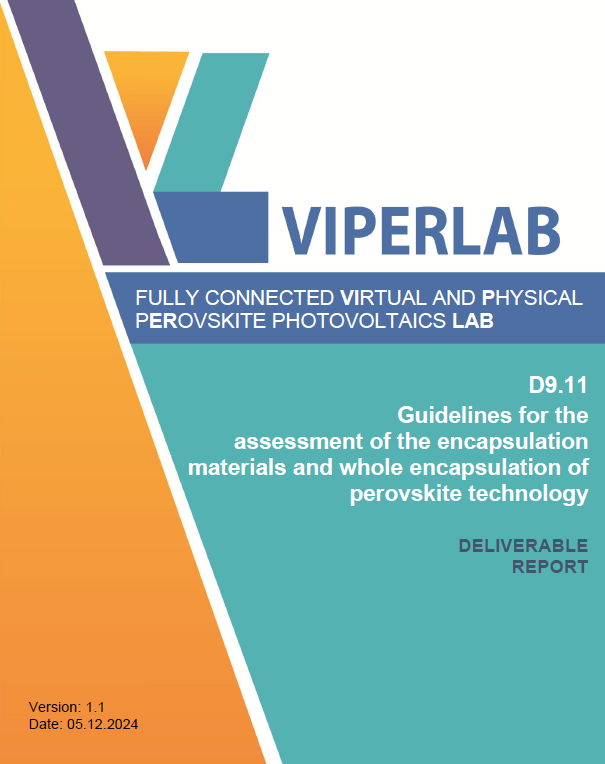 |
|
D9.11 Guidelines for the assessment of the encapsulation materials and whole encapsulation of perovskite technology
Perovskite solar cells are highly promising for next-generation photovoltaics but are particularly vulnerable to environmental factors like moisture, oxygen, and temperature changes. Encapsulation is essential to protect the delicate perovskite layers, ensure device longevity, and maintain high efficiency. This report explores various encapsulation methods, focusing on lamination processes and thin-film techniques, which are particularly relevant for industrial applications. Lamination involves using thermo-fusible polymers or UV-curable adhesives to seal protective covers, while thin-film encapsulation employs advanced deposition techniques like ALD and PECVD to create dense barrier layers.
The study also outlines a comprehensive set of assessment methods for encapsulation materials, including gas barrier testing, adhesion evaluation, and thermo-mechanical analysis. Innovative techniques like calcium tests and perovskite tests are discussed for their ability to simulate real-world degradation scenarios. The collaborative efforts within the VIPERLAB project, particularly between HZB and CEA, tested these methods under extreme conditions such as damp heat (85°C, 85% relative humidity) and thermal cycling (-40°C to +85°C). The results highlight the critical role of encapsulant materials in mitigating water and oxygen ingress, as well as maintaining mechanical stability. Practical tips and recommendations are provided to guide manufacturers in choosing and optimizing encapsulation strategies. This report serves as a valuable resource for improving encapsulation designs to enhance the durability and performance of perovskite solar cells.
|



